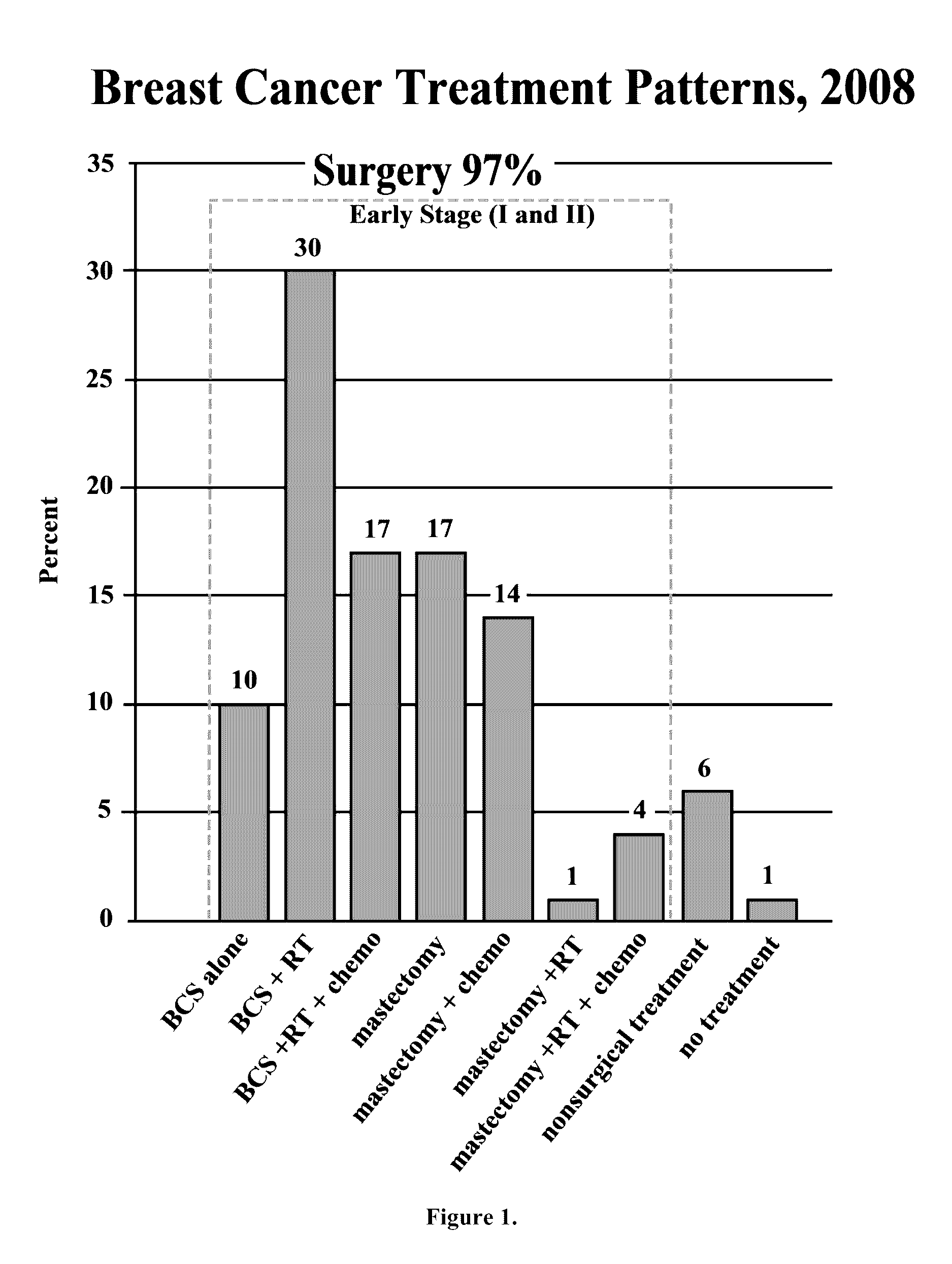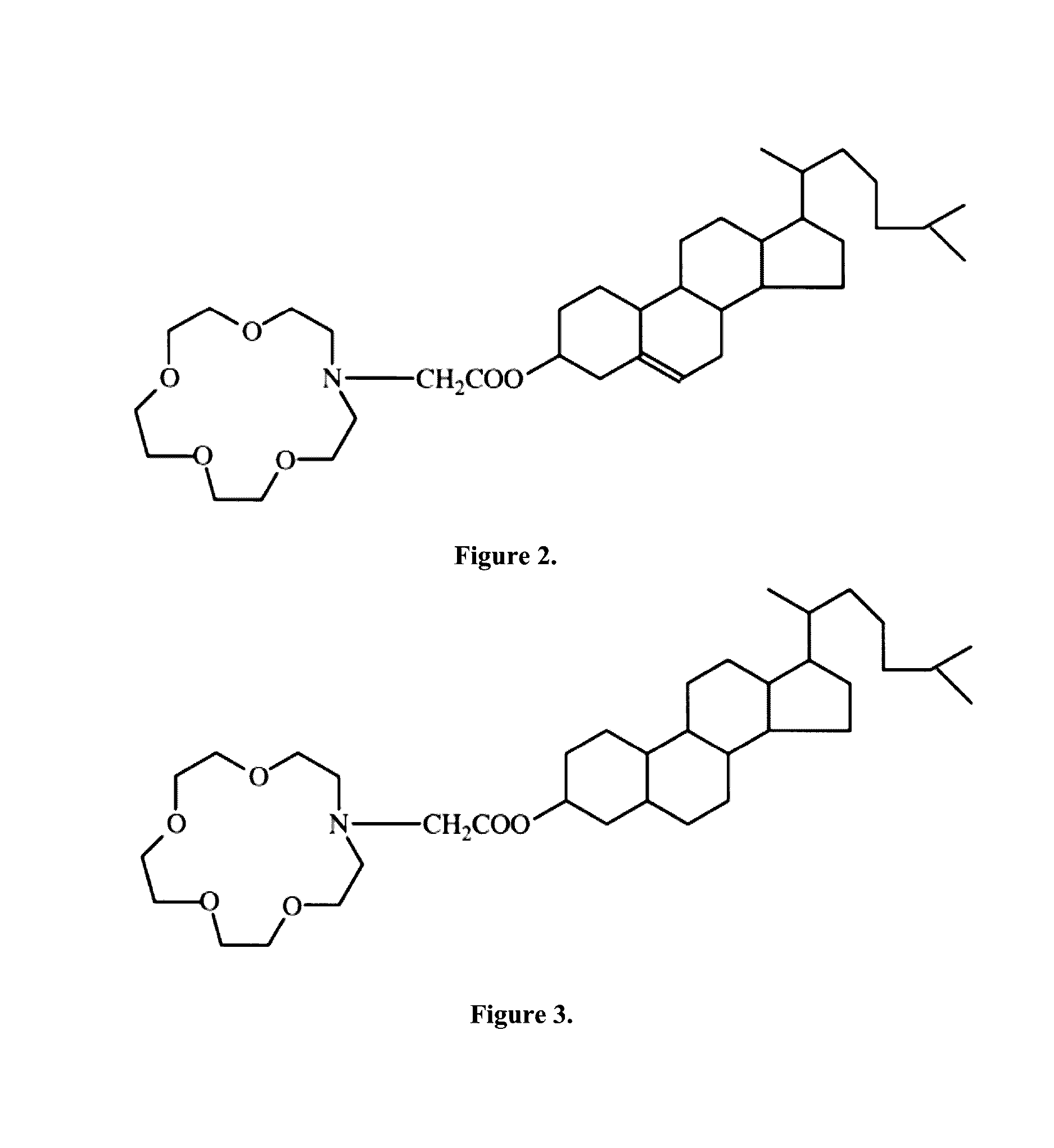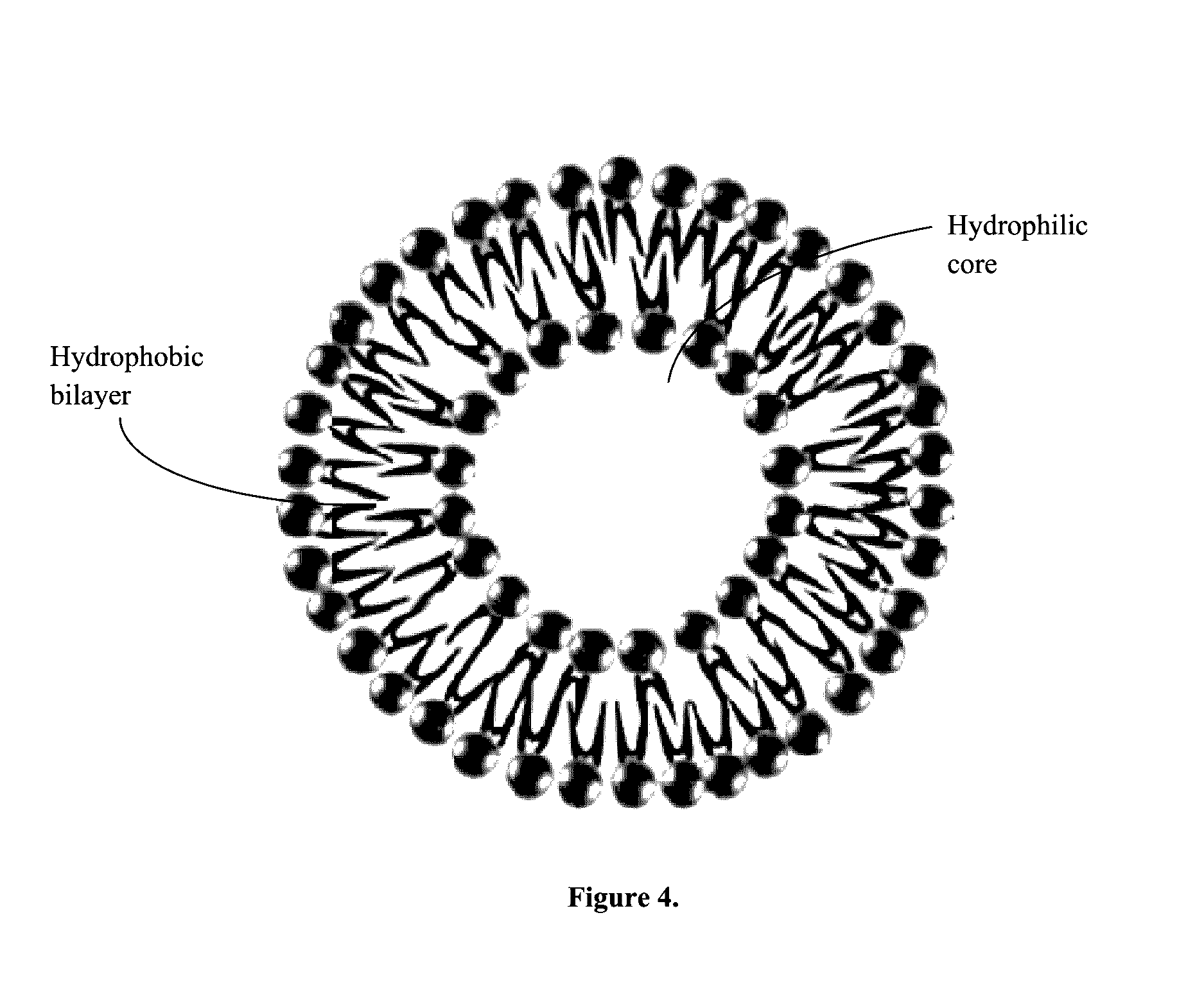Enhanced targeted drug delivery system via chitosan hydrogel and chlorotoxin
a drug delivery and chlorotoxin technology, applied in the field of drug delivery systems, can solve the problems of adjuvant chemotherapy suffering from non-specific distribution of drugs, difficult detection of ovarian cancer in the early stages, and extensive side effects, so as to improve stability, improve stability, and reduce cost
- Summary
- Abstract
- Description
- Claims
- Application Information
AI Technical Summary
Benefits of technology
Problems solved by technology
Method used
Image
Examples
example 1
[0063]The advantage of using niosomes as opposed to liposomes is that the synthetic niosomes have shown to be more chemically stable as vesicles, they are easier to transport and store, they are less expensive, and they have been shown to increase the blood brain barrier permeability. It is composed of synthetic amphiphilic surfactants and cholesterol that make up a bilayer membrane and is able to entrap hydrophilic solutions in the aqueous core and hydrophobic solutions in the non-polar membrane. Exemplary surfactants include, without limiting the scope of the invention, crown ether amphiphiles bearing a steroidal moiety, 1,2-dialkyl glycerol polyoxyethylene ether, hexadecyl poly-5-oxyethylene ether, hexadecyl poly-5-oxyethylene ether (C16EO5); octadecyl poly-5-oxyethylene ether (C18EO5); hexadecyl diglycerol ether (C16G2); sorbitan monopalmitate (Span 40) and sorbitan monostearate (Span 60), Solulan™ C24 (poly-24-oxyethylene cholesteryl ether), polysorbate 20, Span detergents, Bri...
example 2
[0078]Surfactant Span-60, cholesterol and dicetyl phosphate in a molar ratio of 1:1:0.1 were dissolved in 3 ml of chloroform. Paclitaxel was added to this solution. Thin film was made using the same technique mentioned in Example 1. The dried thin film was hydrated by adding 4 ml of 0.01 M PBS and placed in the rotary evaporator in a 60° C. water bath for 1-2 hours.
[0079]The same methodologies for size reduction, separation of the un-entrapped solute, and resuspension of vesicles described in Example 1 were applied to niosomes with paclitaxel. For cell-free and in-vitro release rate studies the initial concentration of 5 mM was used for paclitaxel. Stability analysis showed attaching CTX to the niosome reduced paclitaxel release from the niosomes, regardless of pH differences in the release media.
[0080]To generate niosomes containing two drugs, a hydrophobic and hydrophilic drug, the thin film is prepared by combining surfactant, cholesterol, a hydrophobic drug, and, optionally, neg...
example 3
[0082]9 ml of 2.78% (w / v) chitosan and 3 ml of 65% (w / v)β-glycerophosphate solutions were prepared in aqueous solution of HCl (0.1 M) and deionized water respectively. Both solutions were kept in 4° C. for 1 hour prior to crosslinking. Stirring continuously the cooled β-glycerophosphate solution was added drop wise to the chitosan solution. After adding the last drop, the final solution was stirred for additional 10 minutes.
[0083]Chitosan, an amino-polysaccharide obtained by alkaline deacetylation of chitin, a natural component of shrimp or crab shells, is a biocompatible and biodegradable, pH-dependent, cationic polymer (Chenite, et al., Novel injectable solutions of chitosan from biodegradable gels in situ. Biomaterials, 2000: p. 2155-2161). It is a copolymer of glucosamine and N-acetyl glucosamine and is known to be digestible by lysozyme according to the amount of N-acetyl groups and their distribution in the backbone (Ruel-Gariepy, et al., Characterization of Thermosensitive Ch...
PUM
| Property | Measurement | Unit |
|---|---|---|
| molecular weight | aaaaa | aaaaa |
| molecular weight | aaaaa | aaaaa |
| pH | aaaaa | aaaaa |
Abstract
Description
Claims
Application Information
 Login to View More
Login to View More - R&D
- Intellectual Property
- Life Sciences
- Materials
- Tech Scout
- Unparalleled Data Quality
- Higher Quality Content
- 60% Fewer Hallucinations
Browse by: Latest US Patents, China's latest patents, Technical Efficacy Thesaurus, Application Domain, Technology Topic, Popular Technical Reports.
© 2025 PatSnap. All rights reserved.Legal|Privacy policy|Modern Slavery Act Transparency Statement|Sitemap|About US| Contact US: help@patsnap.com



